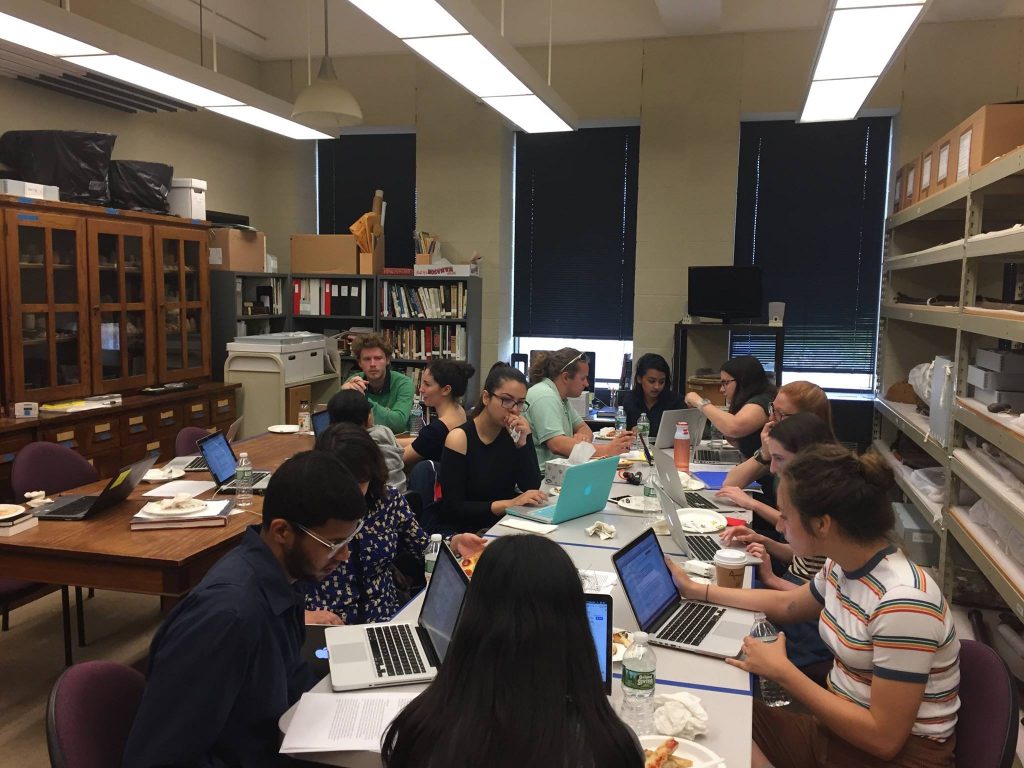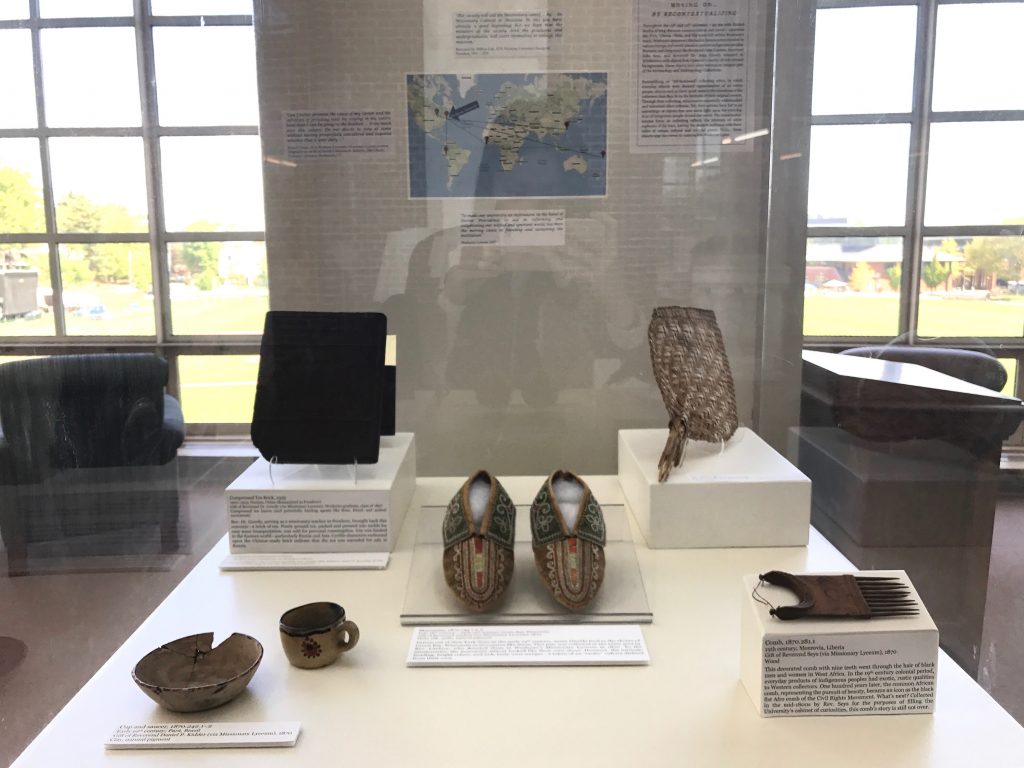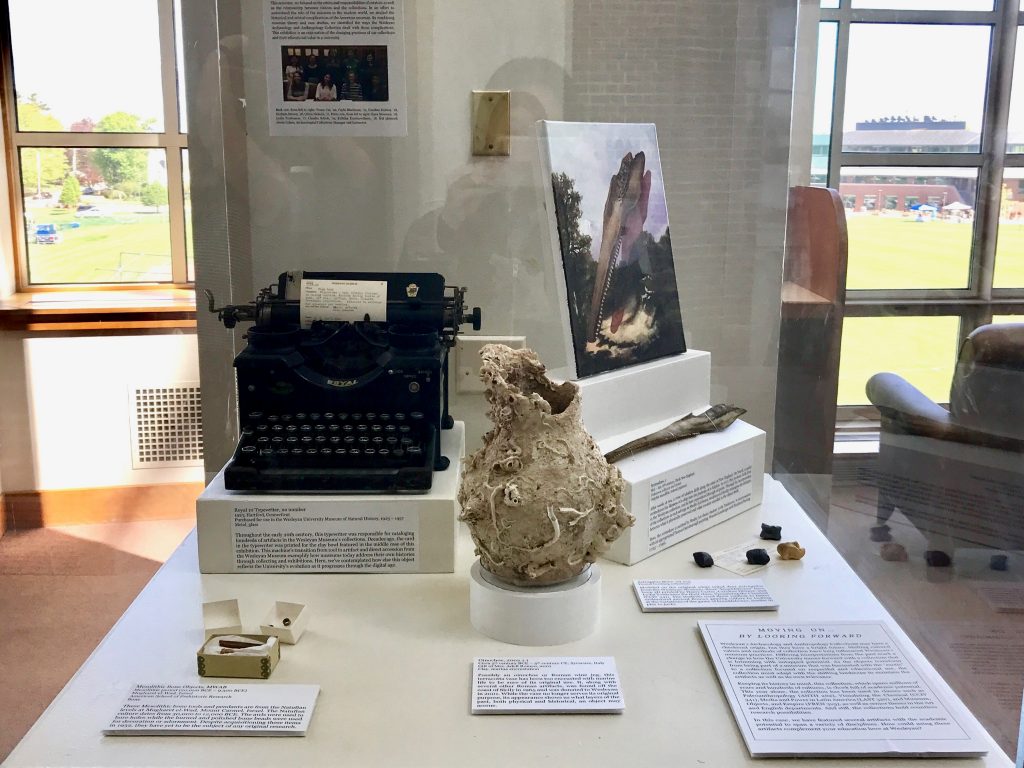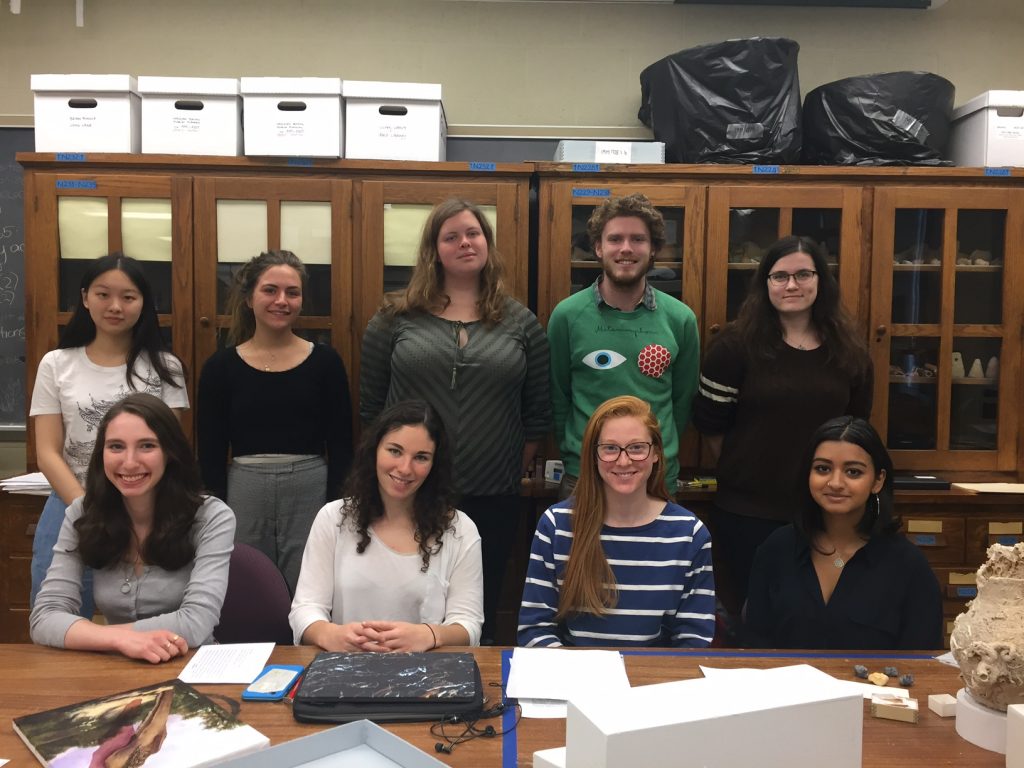***This short essay offers a behind the scenes account of the development of our exhibition: Moving On. The exhibit is on display in the main reading room of Olin Memorial Library through Fall 2017.***
One year later and another post from the “Museum Collections” course (ARCP 267 Spring 2017)! We see ourselves as museums lovers who are interested in learning collections management, exhibition development, and the socio-historical implications of displaying artifacts. During the semester, we studied the historical and ethical complications within American museums. By combining museum theories and case studies, we identified the ways the Wesleyan Archaeology and Anthropology Collections deal with those complications, and curated our own exhibition – Moving On – located on the first-floor main reading room in Olin Library.
The word “museum” is nothing new. We’ve all visited many art galleries, natural history museums, science centers, zoos … since childhood. However, when we start to think about topics behind a museum, like its role in the community, acquisition procedures, and issues with cultural heritage, museum studies becomes a larger discipline that involves considerable discussions and cooperation between fields. As we kept reading, researching, and talking with others during the spring semester, we all obtained some solid ideas about particular areas of museum studies for our final research paper. Besides regular readings and writing assignments, our instructor, Jessie Cohen, designed engaging material culture activities for us to do in class. We visited University Archivist, Leith Johnson, Collections Conservator and Head of Preservation Services, Michaelle Biddle, and Digital Projects Librarian, Francesca Livermore in Olin Library. We discussed everything from how to manage large collections and how to deal with redundant objects, and we also had an Ethics Bowl based on museums in varied situations.
Throughout the semester, we got to know the importance of communication. In museums, curators, educators, and boards of trustees will sit down and discuss upcoming exhibits and events. The course mimicked this process and as a class we all had to consider our roles as curators and actively participate in the design of our exhibition. Towards the end of the semester, we had the opportunity to meet with the students and professor (Corinna Zeltsman) of HIST 321 (“Media and Power in Latin America: From Quipus to Twitter”) for a workshop where we peer-edited each other’s exhibition labels. (For a look at the “Media and Power in Latin America: From Quipus to Twitter” class pop-up exhibit, click here!)


The students in HIST 321 contributed their thoughts on the effect of an object’s history in the present, while we were worked to combine all ideas and made them applicable to our exhibition case themes. Just like museum staff members collaborating prior to the opening of an exhibition, our class had to consider and agree upon text that would be limited to 80 words or less for our exhibition labels. Another important element of communication happens between the museum and the visitor. So, HIST 321 students were able to act as our visitors, and provide us with unbiased feedback. As the curators, we strove to write labels using a reader-friendly narrative that would excite our visitors. This was the hardest part because we had to find a balance between telling a captivating story while also stating the facts and history of the object. In the end, we feel that we were able to provide the visitor with all of the facts by way of an engaging and story-like narrative!

Inspired by the former Wesleyan Museum collection (1871-1957), the Native American Graves Protection and Repatriation Act (NAGPRA), and the graduation of seniors, we came up with the theme of our Olin exhibition: that is, Moving On. We divided our objects into three parts: Moving On by Re-contextualizing, Moving On by Returning, and Moving On by Looking Forward.



Our goal was to have the exhibition play out like a timeline allowing the visitor to rethink the past of Wesleyan’s collecting history within the context of 18th colonialism. We also sought to inform the visitor about what’s happening now with the more than 30,000 objects that comprise the Archaeology and Anthropology Collections, and how students and faculty can utilize these objects by integrating them into coursework, thesis research, and other interdisciplinary methods. In general, this exhibition is an exploration of the changing practices of our collections and their educational value in a university. The story behind each individual object in the exhibition is really fun to read, and just a small glimpse into the array of historical, cultural, and natural specimens that make up the Archaeology and Anthropology Collections. (See here for a closer look at some more collections highlights!)
We do encourage you to stop by the Moving On exhibition located on the first floor of Olin Library anytime during summer! We hope you enjoy the stories we are telling and we invite you to bring your unique perspectives. If you happen to be so interested in museum studies, take ARCP 267 next spring! There you can freely exchange your ideas with fellow museum fans and curate an exciting exhibition next year.
Enjoy the summer and visit more museums!
Venus (Yujie) Cai on behalf of the ARCP 267 Student Curators

Venus Cai is a rising sophomore at Wesleyan University. She will major in Physics and Math in college. Her final paper for ARCP 267 discussed the relationship between science museums and adult visitors. Influenced by her mother’s careers in curation and artwork investments, Venus is interested in Museum Studies and History of Arts. As she is willing to combine her passions in both science and museum studies, she looks forward to interning in the Smithsonian next summer, especially in the National Air and Space Museum.

